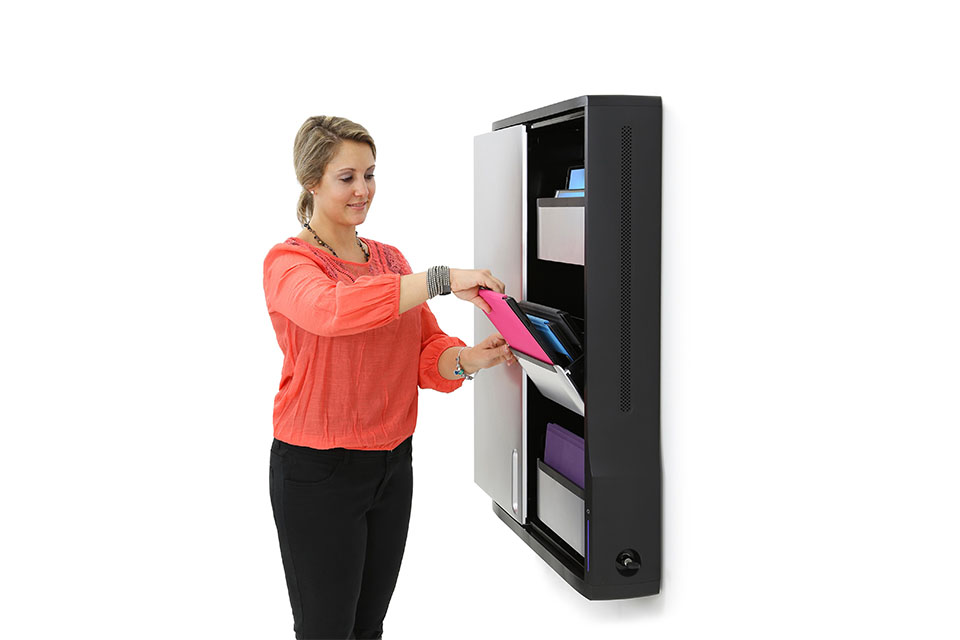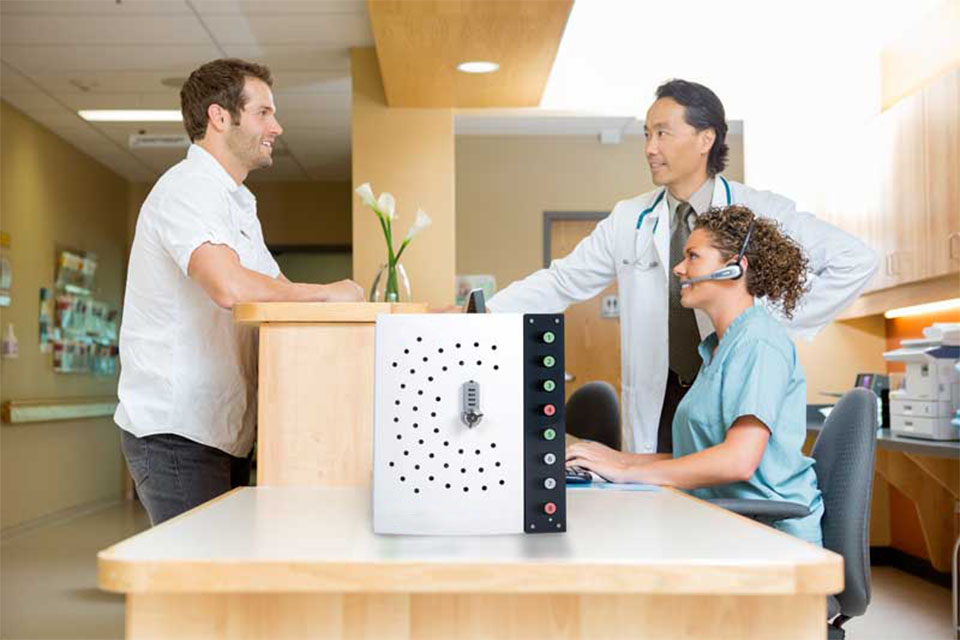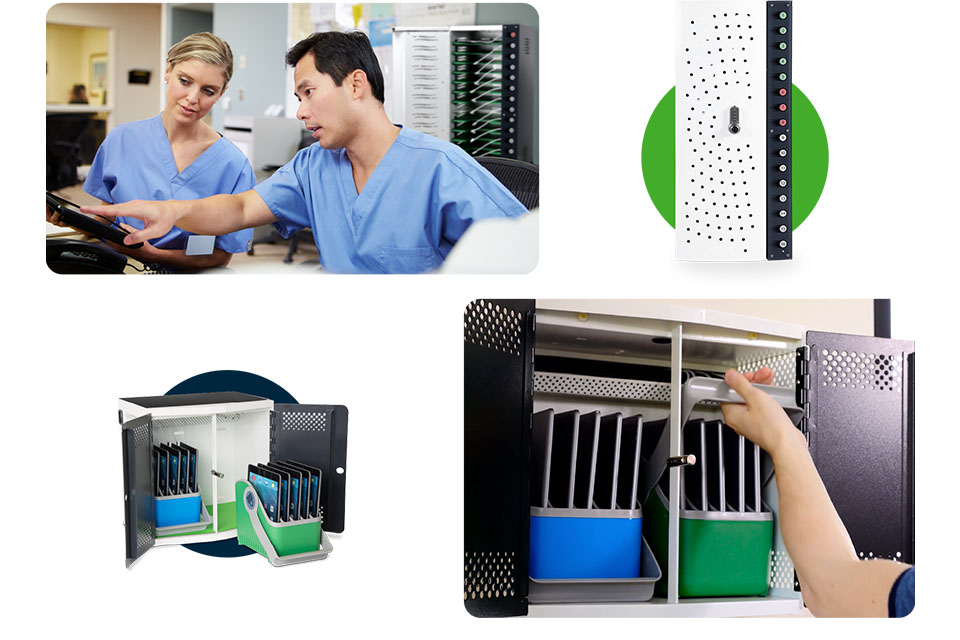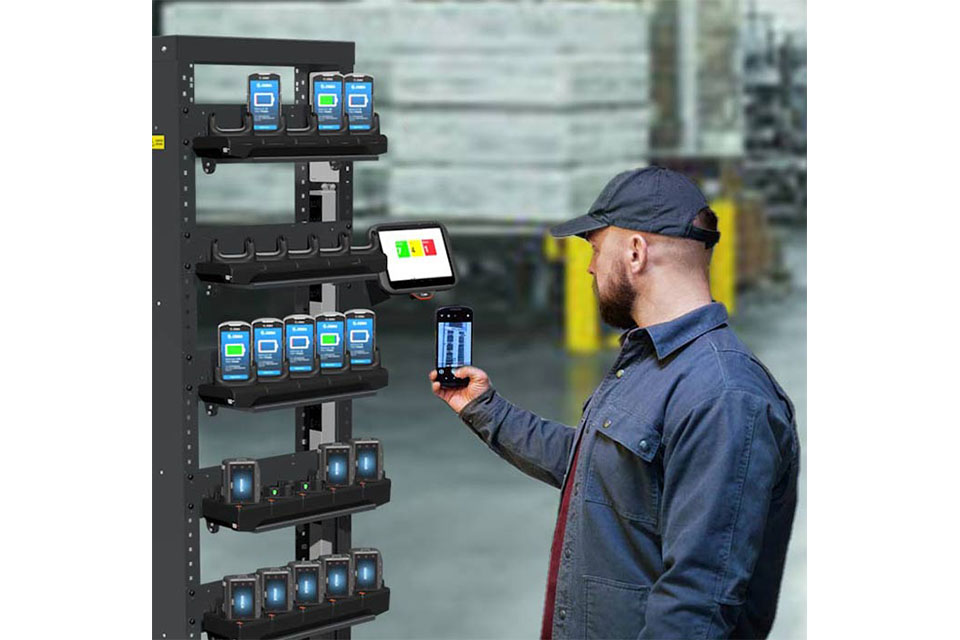Charging Cabinets in Healthcare Keeping Devices Safe and Sanitized
Summary
Charging cabinets in healthcare are specialized storage solutions designed to safely charge and sanitize medical devices, enhancing their operational efficiency and ensuring compliance with stringent health and safety standards. These cabinets play a crucial role in the management of devices such as medical tablets, infusion pumps, and mobile monitors, which are essential for patient care in various healthcare settings. By integrating advanced features like ultraviolet (UV) sterilization, air filtration systems, and robust locking mechanisms, charging cabinets mitigate the risks associated with infection control, device security, and environmental contamination, thereby promoting patient safety and improving healthcare workflows.
The significance of charging cabinets is underscored by their contributions to infection prevention and control (IPC), particularly in high-dependency areas like intensive care units and surgical suites, where the risk of device contamination is heightened. Their design incorporates features that facilitate easy sanitization and compliance with hygiene regulations, effectively reducing the incidence of healthcare-associated infections (HAIs) among patients and staff. Furthermore, the ability to keep devices charged and ready for use minimizes downtime and enhances mobility for healthcare professionals, fostering timely patient care in dynamic environments.
Despite their benefits, the implementation of charging cabinets also faces challenges, including the need for comprehensive staff training on IPC practices and compliance with a variety of regulatory standards. Healthcare facilities must navigate complex guidelines, such as those established by the Food and Drug Administration (FDA) and international standards like IEC 60601-1, to ensure that these cabinets function safely and effectively. Moreover, ongoing advancements in technology, such as touchless operation and IoT integration, are anticipated to further revolutionize charging cabinet design and functionality, making them an essential component of modern healthcare infrastructure.
As the demand for safe and efficient medical devices continues to rise, particularly in the wake of global health crises, the importance of charging cabinets in maintaining device integrity and hygiene remains critical. Their role in supporting healthcare professionals and safeguarding patient health underscores the need for continued innovation and adherence to evolving industry standards in this vital area of medical practice.
Design and Features
Charging cabinets in healthcare settings are essential for maintaining the safety and functionality of medical devices. Their design incorporates several features aimed at optimizing battery life, ensuring device security, and promoting user safety.
Safety Features
Safety is paramount in healthcare settings, and charging cabinets are no exception. They are equipped with robust locking mechanisms to prevent unauthorized access to stored devices, thereby protecting against theft and ensuring that medical devices remain sanitized and secure. Additionally, regular safety training and protocols for cleaning and maintaining these cabinets are essential for protecting staff and ensuring compliance with health and safety standards.
Enhanced Storage Solutions
One of the critical design aspects of charging cabinets is their adaptability to meet the diverse needs of healthcare facilities. These cabinets can be engineered with various storage capacities, allowing for the efficient organization of medical devices such as mobile monitors, infusion pumps, and other critical equipment. This adaptability not only ensures outstanding performance but also enhances space utilization in often congested healthcare environments.
Splash Reduction and Sanitation
The incorporation of improved sink designs and the use of splash-reducing sanitary ware are vital in the design of charging cabinets, especially those located near areas prone to spills or contamination. Additionally, the implementation of splash guards or barriers further mitigates risks associated with liquid exposure, safeguarding sensitive electronic components.
Air Quality Management
Effective ventilation is another critical feature of charging cabinets. They are designed to include air filtration systems, such as HEPA filters, to maintain air quality within the cabinet while preventing the accumulation of dust and contaminants that could compromise device integrity. By ensuring a clean environment, these cabinets contribute to the overall maintenance and longevity of the devices stored within them.
User-Friendly Interfaces
The user interfaces of charging cabinets are also designed with accessibility in mind. Features such as tactilely discernible controls and visual aids can enhance usability for staff with varying levels of dexterity or those working in low-light conditions. Ensuring that the operation of charging cabinets is intuitive and accessible promotes a safer and more efficient working environment.
Environmental Considerations
Modern charging cabinets also emphasize eco-friendliness by utilizing energy-efficient components and materials. These designs not only contribute to reduced energy consumption but also align with the healthcare industry's broader goal of sustainability. By using non-corrosive, biodegradable cleaning agents, facilities can minimize wear on sensitive charging equipment, further extending their operational lifespan.

Applications in Healthcare
Charging cabinets play a vital role in the healthcare sector by ensuring that medical devices and equipment remain safe, sanitized, and readily available for use. These cabinets are designed to charge and store a variety of devices such as medical tablets, mobile carts, and other portable equipment, thereby enhancing operational efficiency and promoting infection control measures.
Device Safety and Sanitization
Charging cabinets not only provide a safe storage solution but also incorporate features that aid in the sanitization of devices. The integration of ultraviolet (UV) light technology within these cabinets allows for the disinfection of surfaces of medical devices, reducing the risk of cross-contamination and infections among patients and healthcare personnel. By keeping devices charged and sanitized, these cabinets support compliance with infection prevention protocols essential in healthcare environments.
Enhancing Workflow Efficiency
In busy healthcare settings, the accessibility of medical devices is crucial for efficient patient care. Charging cabinets help streamline workflows by ensuring that devices are charged and ready for immediate use, minimizing downtime. For instance, medical tablets and cart computers can be kept in these cabinets, allowing doctors and nurses to quickly access patient data and provide timely care. This enhances mobility for healthcare professionals, enabling them to move seamlessly between patient rooms while maintaining connectivity and access to real-time information.
Support for Specialized Care Areas
Charging cabinets are particularly beneficial in specialized patient care areas, such as intensive care units or surgical suites, where the need for reliable and sterile medical devices is paramount. In these high-dependency environments, the risk of contamination is significantly higher, necessitating robust infection control measures. By utilizing charging cabinets, healthcare facilities can ensure that the devices used in these critical areas are not only fully operational but also properly disinfected, thereby enhancing patient safety and quality of care.

Benefits of Charging Cabinets
Charging cabinets, particularly those designed for use in healthcare settings, provide numerous advantages that enhance the safety, functionality, and longevity of electronic medical devices.
Patient Safety and Infection Control
One of the primary benefits of charging cabinets is their role in patient safety. These cabinets often incorporate sanitizing technologies, such as ultraviolet (UVC) lights, which effectively eliminate pathogens from devices frequently handled by healthcare professionals. This sanitization helps minimize the risk of healthcare-associated infections (HAIs), a significant concern in medical facilities. By disinfecting surfaces and equipment, charging cabinets contribute to infection control efforts, promoting a safer environment for both patients and staff.
Device Longevity and Operational Efficiency
Charging cabinets protect electronic devices from damage caused by environmental factors and regular wear and tear. By providing a controlled environment for charging, they help extend the lifespan of devices, thus optimizing operational efficiency and reducing replacement costs. With features that secure and organize devices, charging cabinets ensure that healthcare staff can easily access and maintain equipment, improving workflow and reducing downtime.
Compliance with Healthcare Standards
Adhering to strict hygiene and safety standards is non-negotiable in healthcare settings. Charging cabinets designed for this environment meet essential regulations, such as those outlined in IEC 60601-1-11, which pertains to the safety of medical devices used in home care settings. Compliance with these standards ensures that the equipment used within charging cabinets not only functions safely but also mitigates risks associated with patient care.
Trust and Confidence
The implementation of charging cabinets can enhance trust and confidence among patients and healthcare professionals. By prioritizing the safety of devices and maintaining a clean environment, healthcare facilities can assure stakeholders that they are taking necessary precautions to protect patient health and well-being. This proactive approach to safety fosters a culture of care and responsibility within healthcare environments.

Challenges and Considerations
Health Workforce Education and Training
One of the primary challenges in maintaining infection prevention and control (IPC) in healthcare settings, particularly in conflict-affected regions, is the education and training of the health workforce. Participants in various studies highlighted that many staff members lack adequate knowledge of IPC theory and practice, which poses a significant barrier to compliance with established guidelines. Tailored in-service training is deemed essential, especially for cleaning staff who often work with limited literacy skills. On-the-job training that emphasizes practical applications over theoretical knowledge has been identified as an effective approach to enhance IPC practices.
Infrastructure and Resource Limitations
Infrastructure and resource deficiencies significantly hinder the implementation of IPC strategies. Participants noted that inadequate facilities and insufficient supplies often lead to non-compliance with IPC practices, such as hand hygiene and waste segregation. Although training is crucial, it is often not sufficient without ongoing monitoring and reinforcement of new skills in daily routines. This lack of supervision is exacerbated by understaffing, making it difficult to ensure adherence to IPC standards.
Impact of Conflict on Healthcare Delivery
The direct effects of conflict exacerbate existing challenges to IPC. Security concerns often lead to hospital evacuations or closures, impacting both staff morale and patient care. The ongoing conflict creates an environment where managing visitor access and maintaining orderly visiting hours is particularly difficult, contributing to overcrowding and increased tensions within healthcare facilities. This chaotic environment poses additional risks to IPC efforts, as aggressive behaviors may arise from overcrowding and limited resources.
Cleaning Staff and Their Role
Cleaning staff play a critical role in IPC, yet they are frequently overlooked in training programs. Evidence suggests that less than half of health facilities provide any form of IPC training for cleaning staff, which compromises the overall efficacy of IPC measures. It is essential to develop locally adapted training materials that are suitable for individuals with low literacy levels to ensure that these critical personnel are equipped to perform their duties effectively. The need for improved training and support for cleaning staff is a recognized priority within IPC initiatives, especially in low-resource settings.
Need for Further Research
Despite recognizing the stark challenges faced in conflict-affected healthcare settings, there is a notable lack of comprehensive studies exploring effective IPC strategies in these environments. As the global healthcare community seeks to address these issues, further research is necessary to identify best practices and develop interventions tailored to the unique circumstances of healthcare facilities operating under the strain of conflict.

Regulatory Compliance
Navigating the regulatory landscape is essential for the safe and effective operation of charging cabinets in healthcare settings. Compliance with stringent regulations and international standards is critical not only for legal adherence but also for ensuring the safety, reliability, and efficacy of medical devices that rely on these charging solutions.
FDA Regulations
The regulatory framework established by the Food and Drug Administration (FDA) plays a pivotal role in how batteries and charging systems are integrated into medical devices. Manufacturers must ensure that their designs comply with FDA regulations, which necessitate rigorous testing, thorough documentation, and meticulous design practices to guarantee the performance and safety of battery technologies used in these devices. Such compliance drives manufacturers toward adopting proven battery technologies that meet both regulatory standards and user needs, while also fostering innovation in battery design to produce more efficient and safer options for healthcare applications.
International Standards
In addition to FDA regulations, adherence to international standards is imperative for the development and operation of charging cabinets in healthcare environments. Standards such as IEC 60601-1, which addresses the safety and effectiveness of medical electrical equipment, provide guidelines that must be followed for devices intended for home use and other medical applications. Compliance with these standards often involves ensuring that charging systems are equipped with appropriate safety measures, such as Class II power supply specifications, which provide additional protection against electrical shocks through reinforced insulation.
Hygiene and Sanitation Standards
The healthcare sector also mandates compliance with hygiene standards, which are critical for infection control and prevention. Charging cabinets must be designed to facilitate easy cleaning and disinfection, ensuring that surfaces do not become reservoirs for pathogens. This includes implementing materials and designs that can withstand regular sanitization processes without degrading, thus maintaining both the integrity of the devices and the safety of patients and healthcare workers.
Accessibility Compliance
Further, adherence to the Americans with Disabilities Act (ADA) is necessary to ensure that charging cabinets are accessible to all users, including individuals with disabilities. This compliance encompasses various aspects of design, including accessible routes to the charging stations, operable parts, and user interfaces that cater to diverse needs, such as tactile features and speech output options.
Future Trends
The future of charging cabinets in healthcare is poised for significant advancement driven by technological innovation and changing market dynamics. As the healthcare sector increasingly prioritizes infection prevention and control (IPC), the integration of UV sterilization technology within charging cabinets is expected to become a standard practice. This trend stems from heightened awareness of the role healthcare settings play in the transmission of infections, particularly underscored by the COVID-19 pandemic, which has revealed critical gaps in IPC systems across various regions.
Technological Advancements
Emerging technologies are set to enhance the functionality of charging cabinets. Features such as touchless operation, enhanced UV efficacy, and mobile app integration for remote control and monitoring are anticipated to gain traction in the market. These advancements will not only streamline the sterilization process but also improve user experience and operational efficiency within healthcare environments. Moreover, intelligent charging technology designed to prevent under or overcharging will be critical in extending the lifespan of devices used in healthcare settings.
Market Growth and Expansion
The market for charging cabinets is expected to grow substantially as healthcare shifts towards home-based medical care. The rise in demand for home health care devices will create new opportunities for charging solutions that prioritize both safety and efficiency. This transition will likely lead to an increased emphasis on compliance with safety standards, such as IEC 60601-1-11, ensuring that products meet the necessary regulations for medical equipment.
Increasing Awareness and Regulatory Compliance
As consumer preferences evolve towards smarter hygiene solutions, regulatory oversight surrounding hygiene and safety standards will continue to tighten. The implementation of stricter hygiene protocols across various industries will further drive the demand for UV sterilization charging cabinets. This is particularly relevant in educational institutions and healthcare facilities, where shared devices need regular sanitization to prevent healthcare-associated infections (HAIs).
Sustainable Practices and Smart Integration
The market is also shifting towards more sustainable practices, with manufacturers focusing on creating energy-efficient products that minimize environmental impact. The incorporation of smart technologies, such as IoT connectivity, will enable charging cabinets to be integrated into broader smart building systems and IoT ecosystems. This integration will not only optimize operations but also enhance monitoring capabilities, providing valuable data for healthcare institutions.
 Mobile Charging Cabinets: Power on the Go for Exhibitions and Concerts
Mobile Charging Cabinets: Power on the Go for Exhibitions and Concerts
 How Charging Cabinets Improve Attendee Experience at Conferences
How Charging Cabinets Improve Attendee Experience at Conferences
 Declutter Your Office: The Role of Charging Cabinets in Modern Workspaces
Declutter Your Office: The Role of Charging Cabinets in Modern Workspaces

